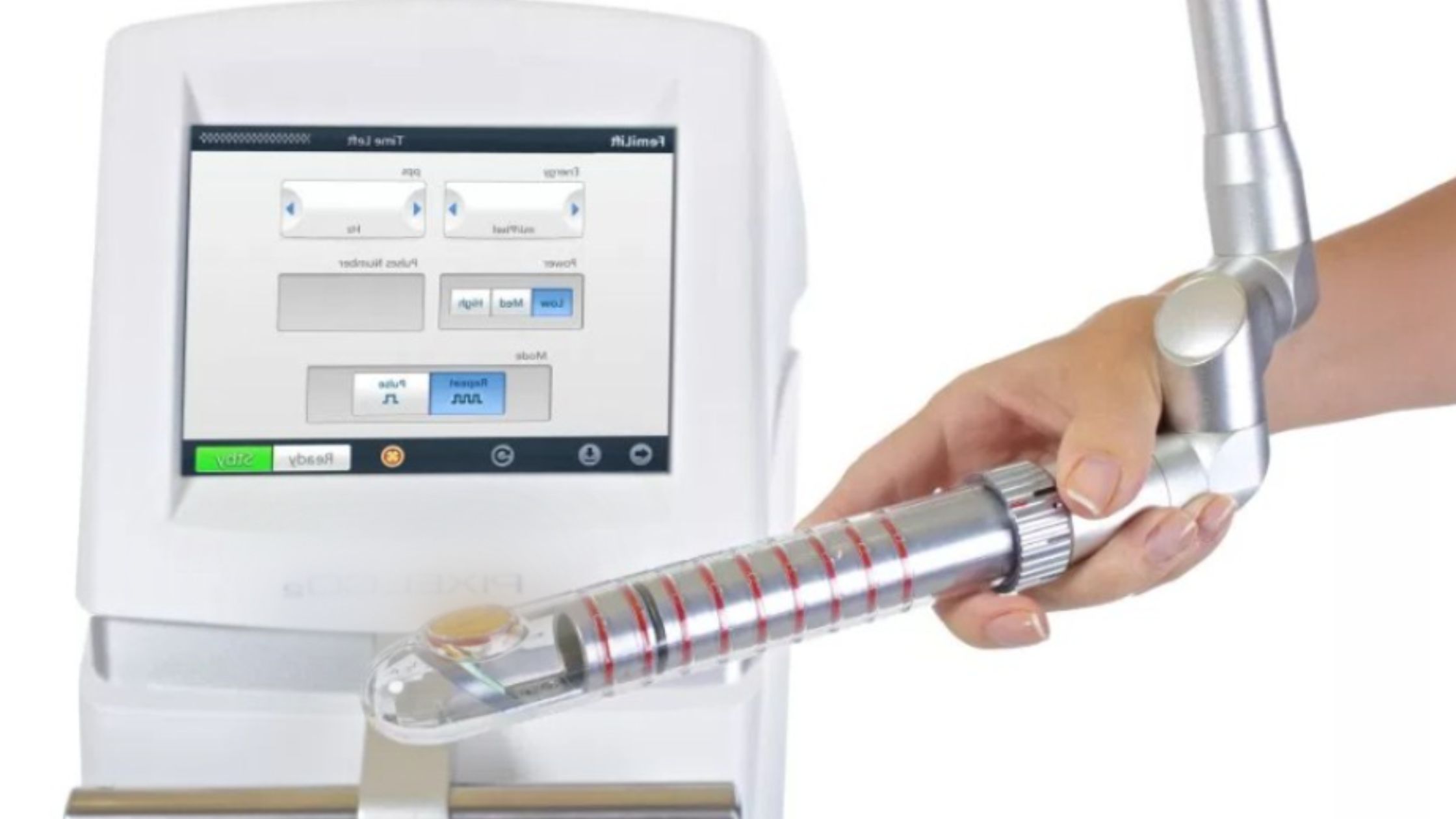LASERS don’t fix bladder leaking
Vaginal lasering gets a lot of hype. Google it, and you’ll see terms like “vaginal rejuvenation” and promises to give you the best sex of your life, renew your vaginal tissues and reverse menopause. You’ll read about super vaginas and improving vaginal lubrication. You’ll read about women who have chosen lasers to avoid hormone replacement therapy. You can read about stars who have done it as well as real housewives. It all sounds too good to be true. Why wouldn’t you want to try a laser treatment with all of these promises?
How does a LASER work?
Let’s start by talking about lasers in general. LASER is an acronym that stands for “light amplification by stimulated emission of radiation.” They are pretty techie, so bear with me here. In a laser, a specific medium is activated and emits a wavelength of high-energy light. There are different types of lasers, and each type is named after the medium that is activated. In gynecology, the common lasers are CO2 (carbon dioxide) and Er: YAG. Each medium releases a different wavelength of light. This means that if you have different types of procedures, you’ll notice that the light may be different colors, like green, blue-green, or red. This is all important because each type of laser acts a little differently on the body.
When the light from the laser is focused on the body, it interacts with the cells by a process called photolysis. “Photo” means light, and “lysis” means destroying the cell. So, the laser causes targeted cell injury. A controlled injury of the skin encourages collagen production and results in skin tightening. Different types of lasers target different layers of the skin. Consequently, it is very important that the right laser is used in the right way in the vagina, or there can be burns. The trick is to increase collagen production and skin tightening while avoiding burns.
Why would you choose this procedure for the vagina?
Vaginal LASER therapy was first done to tighten the vaginal tissue to help with intercourse. None of this was well studied, but some women really thought it improved their sex lives. Vaginal LASERS have also been advertised as helping with Genitourinary Syndrome of Menopause (vaginal dryness and painful sex because of lack of lubrication).
A consensus statement that came out in 2020 (this is basically a document about what experts agree on because there is such limited data) said that LASERS might be helpful to treat vaginal menopausal symptoms, like dryness and painful sex at the time of menopausal and that they had a positive impact on sexual function in the short term. More recent research has made us question whether they really help at all. A trial that compared “vaginal rejuvenation” to fake procedures (this is really the best way to test anything) showed that women improved after the LASER treatments, but no more than the women did after the fake treatments- indicating that the fake treatments worked just as well.
Bladder leaking is often caused by a lack of support to the urethra, the tube that allows urine to exit the bladder. Resupporting the urethra or tightening the tissue underneath the urethra (essentially the vagina) helps with bladder leakage. Theoretically, a laser should tighten this tissue but will it treat bladder leakage permanently?
Do LASERS help bladder leaking?
For a long time, I would say that LASERS were promising. We thought they might help with bladder leaking. I really wanted this to be the case because the recovery from this type of procedure is much easier than a surgery.
There is not much research to help answer this question. Laser treatments currently fall into the “promising” category, at least for the short term. But the data is starting to become much more clear. A study was just published that compared LASER treatment to a dummy treatment for stress urinary incontinence. More than 95% of women in either arm of the study continued to have symptoms of leaking with exercise after the procedure. This result was found at three months after the procedure, indicating the LASER did not help with short-term leaking either. Previous studies have found a 45% success rate at three months.
Most of the studies have found few risks to a LASER. But there are reports of burns, pain, and vaginal narrowing. As with all things, a careful exam must be done first to make sure there aren’t any ongoing issues like a cancer or vaginal skin condition.
There is a small sliver of hope. There are different settings and different LASERS that are used in the vagina. The Er: YAG may have better results, and future studies may tell us this. But for now, I would NOT recommend vaginal lasering.
It’s also expensive, costing between 1,000 and 5,000 dollars.

Alshiek J Fem Pelvic Med & Reconstruct Surg 2020
Li FG JAMA 2021
Alexander JW AJOG 2022
Lauterbach R Int Urogyn J 2022
Seki AS Int Urogyn J 2022
Blaganje M Eur J Obstet Gynecol Repro Bio 2018






0 Comments